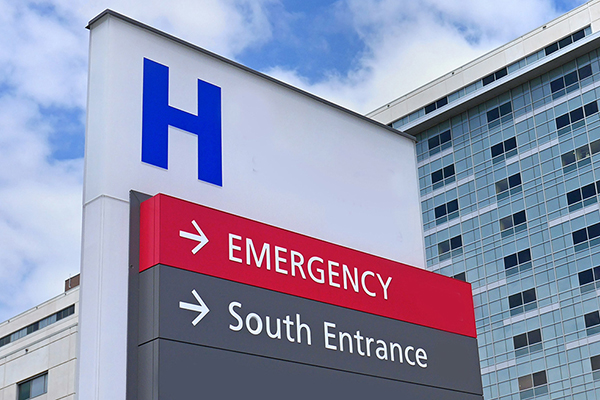
Hospitals get billions in tax breaks and in return they’re supposed to invest in community health. How can state policymakers ensure that money is spent on the right issues to support state health goals?
Nonprofit hospitals benefited from at least $24.6 billion in tax exemptions in 2011, according to a 2015 analysis that used the most recent data available. In exchange for these exemptions, federal tax policy requires hospitals to invest in activities that benefit the health of their communities. But do these activities truly target the most pressing health needs of area residents?
Community benefits requirements for nonprofit hospitals:
|
Policymakers know that 80 percent of people’s health is affected by factors beyond the reach of hospital or clinician care, such as access to nutritious food, safe housing, education, income security, health equity, and other socio-economic factors. Given the importance of these social determinants in shaping people’s lives and health, how can states use their policy levers to ensure that tax-exempt hospitals invest their community benefit dollars in ways that most effectively address and support state health priorities?
The Affordable Care Act (ACA) provides a foundation that states can build on when integrating hospital spending on community health with state priorities. The ACA requires charitable hospitals governed by section 501(c)(3) of the Internal Revenue Code to conduct community health needs assessments every three years, and to adopt a plan to address those needs. It also requires hospitals to establish financial assistance policies and to refrain from charging higher prices to people receiving financial assistance than is generally billed to insured people. The IRS Form 990 Schedule H also requires tax-exempt hospitals to report whether and how they considered community input when creating their community benefits plan.
The interactive Community Benefit Insight tool, supported by the Robert Wood Johnson Foundation (RWJF) in partnership with RTI International and the Public Health Institute, draws on IRS and other data to show how hospitals spend their community benefits dollars. Research shows hospitals spend the majority of their community benefits resources on clinical care – including charity care and Medicaid shortfalls – rather than on community health improvement or community-building activities that can address the social determinants of health. The Community Benefit Insight tool allows users to compare such spending across hospitals and health systems.
States can require hospitals to do more than simply meet the federal requirements. Some states go beyond by requiring hospitals to specifically report how hospitals’ community benefits investments address the social determinants of health or meet the needs of underserved populations. Some states mandate that hospitals spend at least a minimum amount on community benefits.
States also use a range of enforcement strategies to ensure that hospitals comply with state regulations. A new National Academy for State Health Policy (NASHP) table highlights effective state hospital community benefits requirements and related state law requirements in several states. The table can inform state policymakers who want to leverage their states’ community benefits process to improve community health.
States command a range of policy levers that can maximize hospital community benefits spending to address the social determinants of health. To help states deploy these levers effectively and share best practices, NASHP has convened a Hospital Community Benefits Workgroup, composed primarily of officials from state attorneys general and insurance commissioners’ offices, as well as state Medicaid, public health, and justice departments. With support from RWJF and the New England States Consortium Systems Organizations, the workgroup is exploring how states can develop more meaningful hospital community benefits and community-building investments that align with state public health priorities and address the social determinants of health. This mission includes examining:
- How states define and count community benefits;
- How to ensure community health needs assessments are substantive;
- How community health trusts can be used as a tool for community benefits investing; and
- What measurement tools are available to evaluate the benefits of community benefit spending on public health programs.
While the table – and the workgroup – currently focus on the New England states, the list will be expanded to include other states as work progresses. State officials are invited to become involved with the NASHP community benefits workgroup or share their states’ efforts to maximize hospital community benefits investments. Please contact Amy Clary at aclary@nashp.org for more information.
Explore the Hospital Community Benefits Comparison Table – New England States, which highlights effective state hospital community benefits requirements and related state law requirements in several states.
Support for this work was provided by the Robert Wood Johnson Foundation. The views expressed here do not necessarily reflect the views of the foundation.



